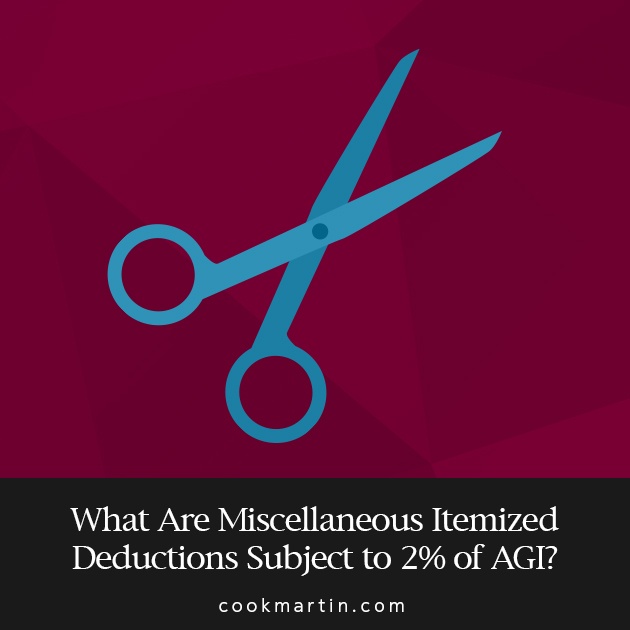During the year, do you incur a lot of expenses for professional services? Do you pay
an advisor to do your investments for you? Do you pay a lot of expenses as an
employee but are not reimbursed? These type of expenses are classified as a
“miscellaneous itemized deduction.” It may result in a tax deduction for you if you
itemize your deductions, depending on your adjusted gross income (AGI) and the total
of all your miscellaneous items.

First, you compute your total of all expenses that fall into the miscellaneous deduction
categories. This amount is deductible as an itemized deduction but only if (and to the
extent) it is greater than 2% of your AGI. Note that since it is an itemized deduction, it
can only be claimed if you itemize your deductions and don't claim the standard
deduction.
Example. Jerry's AGI is $75,000. His miscellaneous itemized deductions total $2,000. If
he itemizes his deductions, he can claim a $500 deduction for his miscellaneous items:
$2,000 − $1,500 (2% of $75,000).
What are miscellaneous itemized deductions?
The following are itemized deductions subject, in total, to the 2% rule described above:
1. Tax return preparation costs. This category includes the fee to have your tax
return prepared as well as other costs related to determining your taxes, such as
appraisal costs or legal fees.
2. Employment-related expenses of an employee other than those reimbursed
under an arrangement that meets special requirements. If you incur deductible
expenses in connection with your employment, they are miscellaneous deduction
items. These include out-of-pocket expenses for which you aren't reimbursed by
your employer. These expenses can include educator expenses and dues to
professional organizations/societies. If you have a reimbursement arrangement with your employer, let your accountant know the arraignment requirements so that your accountant can determine the proper tax treatment of those reimbursements.
3. Investment expenses, and expenses of producing or collecting taxable income.
This category includes investment advisor's fees, investment publications, and
the cost of a safe deposit box.
4. Hobby expenses. Expenses related to an activity that is a mere “hobby” (i.e., not
a trade or business) are only deductible up to the extent of your income from the
activity. You are taxed on the income and then only separately deduct the related
expenses as miscellaneous itemized deductions.
Conclusion
While I have listed some of the most common itemized deductions subject to the 2%rule, there are many possible expenses that couple is included as an itemized
deduction. If you have questions about whether certain expenses can be included as a
deduction, please contact your accountant at CMP.
















